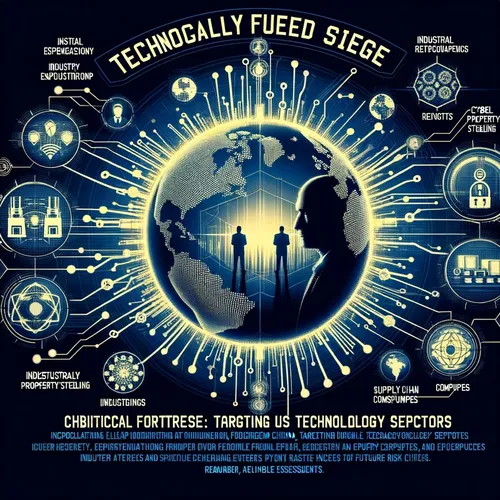Cyber Chaos: China Hacks Microsoft, Raids Pentagon Cloud, and Infiltrates Telecoms!
- Author
- Quiet. Please
- Published
- Fri 25 Jul 2025
- Episode Link
- https://www.spreaker.com/episode/cyber-chaos-china-hacks-microsoft-raids-pentagon-cloud-and-infiltrates-telecoms--67115688
This is your Silicon Siege: China's Tech Offensive podcast.
Guess who's been pulling double shifts in threat detection this month? Me, Ting—your cyber news navigator, reporting from the frontline of Silicon Siege: China's Tech Offensive. Let’s plug straight into the latest developments, because the past two weeks have seen a cyber rollercoaster in America’s technology sectors.
First up: the Salt Typhoon drama in U.S. telecom. Senator Maria Cantwell asked Mandiant to hand over their forensic receipts after doubts surfaced about whether Verizon and AT&T had truly kicked Salt Typhoon—the cyber espionage squad linked to China—off their networks. According to a recent Department of Homeland Security memo, Salt Typhoon didn’t just snoop; they skimmed National Guard network configs and admin creds, mapping potential highways into every other state’s systems. As Kim Zetter, the legendary cybersecurity journalist, warned, what starts as mere data collection can flip into system disruption or outright destruction at the attacker’s whim. Once embedded, these threat actors have options, and that’s what keeps cyber experts awake at night.
Meanwhile, if you trust SharePoint is your company’s digital fortress, brace yourself. Microsoft, in their July 22 blog, admitted two China-linked groups—Linen Typhoon and Violet Typhoon—had been exploiting a zero-day vulnerability, dropping ransomware and poking around multiple U.S. agencies, including the Department of Health and Human Services, the NIH, and even DHS. CBS News tracked outages and confirmed rapid patching, but these state-backed crews have a reputation for blending pure espionage and intellectual property theft. Unfortunately, as Damon Bancal, a cybersecurity specialist, noted, shareable exploit code surfaced online, making the attack vectors dangerously accessible.
But wait, there’s fresh steam in virtualization espionage too. Sygnia just flagged the “Fire Ant” campaign, a stealth operation resembling the toolkit of UNC3886—one of China’s top advanced persistent threat groups. Fire Ant isn’t baby’s first breach: they’re targeting VMware vCenter and ESXi infrastructure, burrowing into network zones thought to be isolated. What makes them truly Frankensteins of the cyber underworld is their use of multi-stage kill chains and real-time adaptability. You patch, they pivot; you kick them, they slip to another layer.
The cherry on this cyber sundae? The Microsoft-DoD cloud escapade. ProPublica and CBN News uncovered that Microsoft let China-based engineers feed code straight into Pentagon systems as part of routine cloud support—under the watch of U.S. “digital escorts” who, frankly, weren’t always up to decoding the code. According to Jack Burnham from the Foundation for Defense of Democracies, this exposed core military networks to unknown vulnerabilities for over a decade. Defense Secretary Pete Hegseth just pulled the plug on China’s involvement, but the question on every insider’s lips is: How many “legacy systems” are still quietly compromised?
Now for a few closing bytes. Why does this all matter for U.S. tech sectors? Industrial espionage from China isn’t just about headline-grabbing hacks. Industry experts like Rex Booth stress unclassified cloud data can still fuel insider algorithms that map U.S. interests, leaving IP and supply chains primed for exfiltration or sabotage. The Office of the Director of National Intelligence calls China the "most active and persistent cyber threat” to U.S. business and infrastructure, driven both by law and relentless capability.
The strategic implication? U.S. tech isn’t just under siege—it’s in a protracted chess match. As defenders patch and pivot, attackers regroup and escalate. Continuous vigilance, cross-industry threat intelligence, and deep supply chain scrutiny are no longer optional. If you think your stack is safe because it’s hidden or “not critical,” think...
